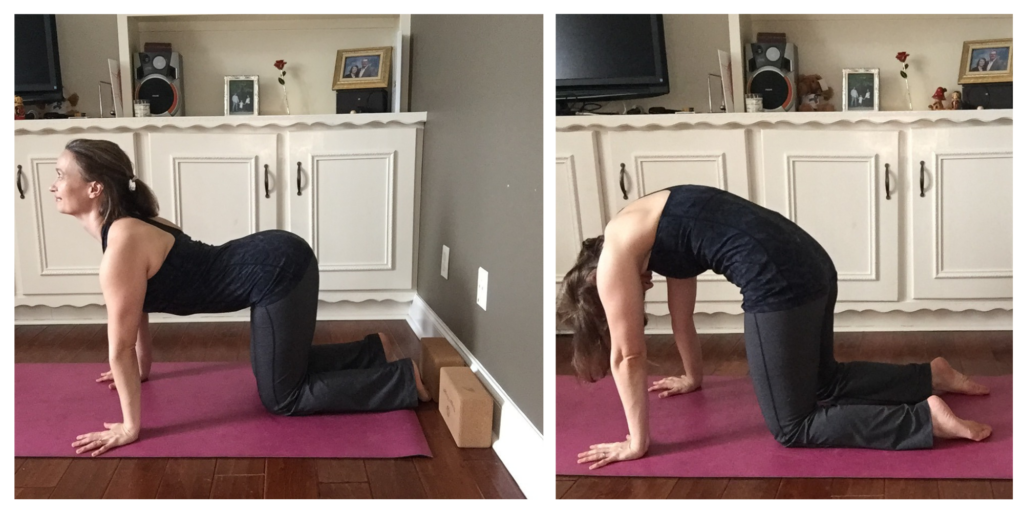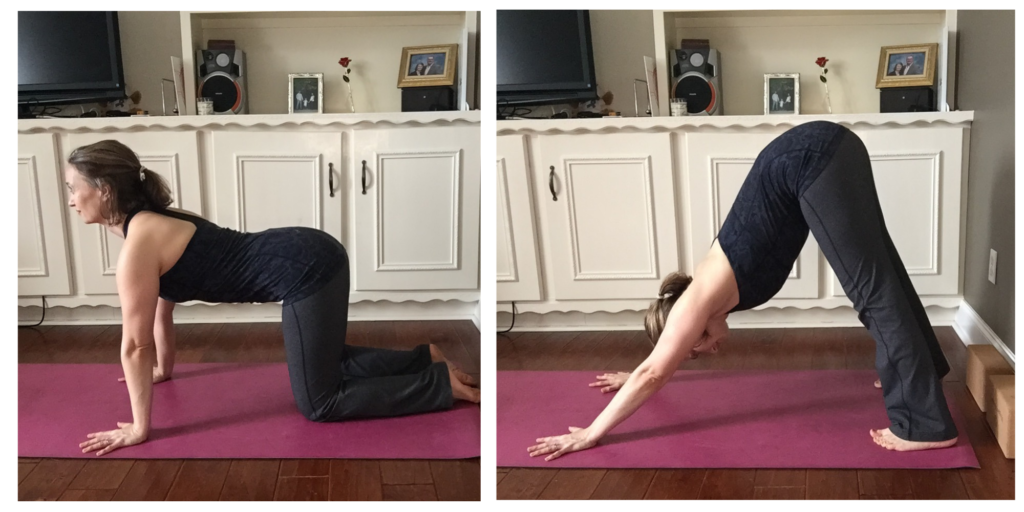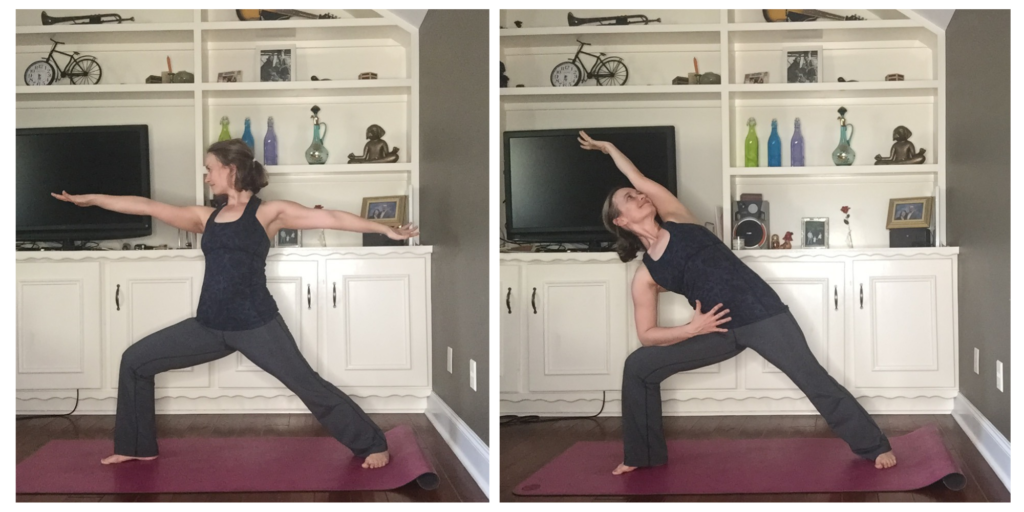
I get why a lot of pregnant moms are hesitant to work out their core during pregnancy. After all, a pregnant body changes and shifts daily–and the most notable change is definitely in the midsection area where baby is growing! Not only is it safe to keep doing core exercises during pregnancy, doing so has a whole host of benefits. There are SO many reasons to practice safe core exercises for pregnancy.
If you have more questions about if specific yoga poses are safe for pregnancy, head over to my YouTube playlist of videos I’ve done on the topic.
What are the core muscles?
Before we get into the benefits, let’s talk about what I mean when I talk about the core. In short, it’s not just those six-pack abdominal muscles.
When I talk about core strength, I’m talking about allllll of the muscles that make up the midsection.
Yes, it includes the abdominals (both the superficial muscles like those six-pack rectus abdominis as well as the deeper transverse abdominis). the internal and external obliques, and the muscles that support the spine and low back.
The pelvic floor is even a part of the core, which is of particular interest to pregnant women for obvious reasons.
I asked Melissa Dessaulles, perinatal physical therapist and the founder of Mommy Berries, to share a bit more about why, exactly, it’s more important than ever to keep those core muscles strong and supple during your pregnancy.
The ‘core’ is a team of muscles that make up a balloon shape. The diaphragm is the top, the pelvic floor the bottom and the TA wraps around the front, sides and back. During pregnancy, a baby grows in the middle of the balloon and has the effect of ‘distorting’ the core. The diaphragm gets shoved up, the pelvic floor gets stretched but also needs to work harder with the weight above and the TA gets really stretched at the front. The result – the core team becomes inefficient.
It is important during pregnancy, to support these muscles during a time that they are changing rapidly. Knowing how to really let them relax during birth but also how to help them contract during exercise can help your body feel supported.
I start with my pregnant clients feeling this in positions of rest first and have them progress to using their core connection cues in movements including strength training or yoga.
Melissa Dessaulles, MommyBerries.com
Benefits of Core Exercises for Pregnancy
Better posture = fewer aches and pains overall.
Less back pain.
Stronger pelvic floor.
More control during labor and delivery.
More effective pushing during birth.
Faster recovery after birth.
Things to Remember about Core Exercises during Pregnancy
You know your body better than anyone else. Please listen to your body’s cues and if something feels off, don’t do it.
Once you’re in your second trimester, you’ll want to start avoiding exercises where you lie on your back for an extended period of time, so traditional abdominal exercises like sit ups and crunches are not recommended. Plus, these have been known to make the separation of the abdominal muscles worse (diastasis recti) .
And as long as we’re on the topic of diastis recti, I’ve heard conflicting advice about planks. If you’re worried about this, it’s OK to skip them or modify. One of my favorite core exercises for pregnancy is a modified Plank Pose that offers many of the same benefits of Plank with a little less pressure on the abdomen.
As a rule of thumb, you will want back off if any posture turns that round basketball-shaped belly into something that looks more like a mountain peak.
See my current Prenatal Yoga Class schedule here!
Prenatal Yoga: 10 Safe Core Exercises for Pregnancy
Mountain Pose
That’s right. It looks a lot like just standing there. But it’s so much more. See, when you’re pregnant, the weight of your growing baby pulls you forward and down. By simply having really good posture, you can build your core strength as you stand, sit, and move through your daily activities. Mountain Pose is a great place to practice proper posture so you can stay strong in your core (and the rest of your body, too!).
So stand up straight and tall. Make sure your toes are pointed straight forward and your hips are about hip-distance wide. Focus on lengthening your tailbone toward the floor and making sure your bottom ribs are directly above your hips (not poking forward). This will give you a slight engagement to your tummy.
Not only does this make your core stronger, it helps your ward off low back pain. Win-win!
Cat + Cow Pose

From hands and knees (also sometimes called a Tabletop position), exhale as you round your back and look into your belly button. With an inhale, pull your chest forward and lift your tail bones up exaggerating the curve of the spine. Repeat for a few rounds moving with your breath at your own rhythm.
This is one of my favorite yoga pose combos not just because it is a safe way for pregnant women to engage their core and open their chest and shoulders. It also is one of my favorite ways to help moms connect to their breath and pay attention to what types of movement their bodies are craving in the moment. 10/10 stars – highly recommended!
Down Dog Flow

From hands and knees , tuck your toes under and begin to lift the hips up and back until your body takes the shape of an upside down V.
Note: Pregnant moms will want to have their feet pretty far apart so there’s no compression of the belly.
Inhale, bring your shoulders over your wrists and knees to the floor. Exhale, press back up into Down Dog. Repeat a few times, letting your breath set your pace.
Bird-Dog Balance

From your hands and knees position , extend your right leg behind you with your toes to the floor. With a slow, controlled movement, lift your leg until it’s parallel to the floor. Gently hug your baby with your abdominals. You may choose to stay here, or reach the opposite hand forward, like you want to shake someone’s hand.
Optional:
For a little extra back strength, try lifting the outstretched hand and foot up a couple of inches and back down in little controlled pulses. Or, bring both the hand and foot to lightly tap the floor and lift back up to parallel again.
Switch sides.
Modified Plank Pose

From Tabletop, move your knees back a few inches until your hips drop and your body makes a line from your shoulders to your knees (not counting your baby bump, of course). Spread your fingers, and practice squeezing your hands toward each other so your arms engage strongly. Tilt your just pelvis toward your knees as if you were going to move into a Cat pose, but keep the spine in a straight line. Notice how this action causes your abdominals to gently hug your baby. Hold for a couple of deep breaths.
Optional:
Keep your collarbones wide and bend your elbows straight back (toward your feet) as you lower a few inches down into a modified Chaturanga Dandasana. Then, straighten your elbows and lift yourself back into modified Plank (above).
See 7 Sun Salutation Modifications for Pregnancy
Lunge with Pelvis Tilt

Step your right foot forward and lift your torso up into a low lunge. Raise your arms overhead. Notice the tendency for the baby to pull your torso forward and down exaggerating the curvature of the lumbar spine (low back).
Instead tilt your pelvis so that your tailbone reaches toward the floor and the front of your hips lift slightly. Simultaneously guide your rib cage back. Feel your abdominals gently hug your baby and provide you additional support.
Come down and repeat with the left leg forward.
Optional:
Try the same exercise with the back leg straight. Bend the back knee slightly to help you lift the front of the hips up and knit the ribs in. Hold the pelvis and ribs where they are as you straighten the back knee again.
Lunge with Twist

Stay upright in your lunge. With a deep inhale lift the crown of your head toward the ceiling. As you exhale, twist your shoulders to the side. You’ll twist away from the front knee. (To the left if your right foot is forward, for example.) Keep your belly button facing forward and take the twist in your upper body. Inhale as you turn to face forward. Repeat several times. Then, switch sides.
See How to Modify Lunge Twist for Pregnancy
Side Angle Flow

Start in a Warrior 2 Pose (Virabhadrasana 2) with your right foot forward. Bring your front forearm to your thigh and your right hand to your belly. Even though that forearm is resting on the front thigh, make it as light as possible. Turn your collar bones up toward the ceiling.
Inhale, use your core to lift your torso back into Warrior 2. Hold your pose for an extra breath.
With your next exhale, slide your back hand down your back leg. Reach your front arm up and overhead finding a big stretch of the right side body.
Repeat a couple of times. Then, switch sides.
Deep Belly Breathing
You don’t have to be in a prenatal yoga class to practice deep belly breathing or diaphragmatic breathing. In my prenatal yoga classes here in Charleston, SC and online, I often refer to this as Breathing for Two.
Breathing so deeply that you feel as if your belly is expanding and you are sending extra oxygen to the baby. To take a deep breath, your deep core muscles have to work to lift your ribs slightly and make room for your belly to expand. This may be why it increase core stability.
Plus belly breathing can slow your heart rate, lower blood pressure, and trigger a relaxation response.
See also 6 Breathing Techniques for Labor

Many thanks, very interesting article
I’m so glad you enjoyed it!